Why Was Pharaoh Khafre Almost Wiped Out From Historical Records?
Ellen Lloyd – AncientPages.com – It’s strange that Khafre, the son of Pharaoh Khufu and the builder of the second of the three Pyramids of Giza, is somehow missing from ancient Egyptian historical records. Pharaoh Khafre’s absence from historical pages has led to many speculations.
Left: Statue of Khafre Egyptian Museum, Cairo. Credit: Public Domain - Right: Khafre's Pyramid. Credit: MusikAnimal, CC BY-SA 3.0
Historical data about Pharaoh Khafre is scarce and often contradicting. Who was this mighty Pharaoh who believed he was the embodiment of the God Ra?
Who Was Pharaoh Khafre?
Ancient Greeks said he was a cruel tyrant and heretic, but is there any evidence of this? In the writings of Manetho, an ancient Egyptian priest and historian, there is no information about Pharaoh Khafre, except for the number of years that he ruled.
Starting with what historians know with certainty is that Pharaoh Khafre, also spelled Khafra, Greek Chephren, was the brother and successor of Djedefre whose reign was short, not more than 10 – 14 years ca. 2575 B.C. The length of Pharaoh Khafre’s own reign is uncertain. According to some historians, he reigned between 2558 BC and 2532 BC. Manetho claims Khafre had power over Egypt for as long as 66 years, and the Turin List doesn’t mention Pharaoh Khafre at all.
Pharaoh Khafre had several wives, at least 12 sons, and some daughters as well.
Khafre seems, just like his father, Pharaoh Khufu, to have been almost completely wiped out from the historical records. If it hadn’t been for the two constructed pyramids, it’s doubtful their existence would have been known to future generations. One can only wonder if there was a reason to wipe out Khafre from historical records.
Did Ancient Greeks Give Pharaoh Khafre A Bad Reputation Or Was He A Tyrant?
Most of the information we possess about Khafre comes from the historical reports of the ancient Greek historians Diodorus and Herodotus. The problem with this knowledge is that they wrote about Khafre about 2,000 years after the Pharaoh’s death. One can, therefore, question the accuracy of the credibility of these ancient Greek accounts portraiting the Egyptian Pharaoh. Were the Greek chronicles written objectively?
Herodotus and Diodorus described Pharaoh Khafre are a ruthless ruler who was a heretic, just like Pharaoh Akhenaten.
These ancient Greek authors claim that the poor Egyptians had to suffer under the horrible rule of Pharaoh Khafre and before that they had to put up with his father Khufu who was just as ruthless. Their writings mention how a King named Menkaura, a follower of Khafre was saddened and disappointed about Khufu's and Khafra's cruelty. Apparently, later, King Menkaura brought peace and piety back to Egypt.
Modern Egyptologists do not put much faith in the ancient Greek descriptions of Pharaoh Khafre. Though ancient Greeks accused Khafre of being a cruel tyrant, who kept the temples closed after his father’s death, there is little evidence other than their writings to prove this.
Statue of Pharaoh Khafre at the Egyptian Museum. Credit: Einsamer Schütze, CC BY-SA 3.0
Unfortunately, these ancient Greek writings have given Pharaoh Khafre a bad reputation, and this negative image has overshadowed his magnificent building projects.
“Khafre established a royal court at Memphis, and it is from there that he and his family members and chief councilors governed Egypt. Some of these councilors worked as architects and likely helped lead the building projects of the pharaohs.
They were also involved in trade and foreign policy, ensuring that the peaceful and prosperous Egypt that Khafre inherited from his father, Khufu, was maintained. It appears that they were successful since no evidence of any military activity or attacks on the empire has been discovered for that time period.
The economic strength and stable nature of Khafre’s Egypt undermine previous historical beliefs that he was not popular with his people. It is likely that the reverse was in fact true since people thrive in the kind of environment Khafre reportedly ruled over.” 1
Does The Great Sphinx Depict Pharaoh Khafre?
Among the most famous ancient Egyptian statues is undoubtedly the Great Sphinx at Giza. Egyptologists, historians, archaeologists, and anyone interested in the history of ancient Egypt have an opinion about the magnificent and mysterious Sphinx that refuses to give up its secrets.
Who does the Great Sphinx depict? Some have suggested the Sphinx once had a twin but it was destroyed by lightning. Another theory is that the Sphinx was made in the image of Anubis, the immortal jackal God of mummification.
Khafre's Pyramid and the Great Sphinx. Credit: Public Domain
Several historians have proposed the Great Sphinx was built for Pharaoh Khafre during his reign. If this is true, then it’s possible the great Sphinx may depict Khafre, but theory one problem with this theory.
If you have ever seen Khafre’s head on that huge statue in the Cairo Museum, you know they look nothing alike at all since Khafre “has a long face and the Sphinx has a round face.” 2
Pharaoh Khafre constructed giant statues in Egypt, but there is no evidence that the Great Sphinx of Giza was made in his image.
The Pyramid Of Khafre
Many will agree that Pharaoh Khafre built the second-largest pyramid at Giza. The Egyptian name of the pyramid was Wer(en)-Khafre, which means "Khafre is Great".
“Access to the inside of Khafre’s pyramid is through two entrances, one at ground level and the other partway up the structure. The lower one is a passageway leading into the bedrock on which the pyramid was constructed. This eventually leads into two chambers. A ramp connects the two entrances, and off this ramp is a slope leading to the burial chamber, again carved from the bedrock.
The sarcophagus, carved from a block of black granite, is sunk into the rock of the chamber. It is not known if Khafre’s mummified body was ever in the sarcophagus. Some inscriptions and statues found around the pyramid complex are some of the best evidence that the pyramid was built for Khafre.” 2
It would have been much easier to discuss Pharaoh Khafre if his historical records had been preserved. "Elements of history seem to have been deliberately erased, perhaps for superstitious reasons. For example, a large statue of Khafre was found deliberately buried upside down in one of the temples, and historians are still puzzling as to why that would be the case." 1
The ancient Greeks accused Khafre of being a megalomaniac because he constructed giant statues and monuments. Still, every Pharaoh wanted to have impressive monuments and statues in the land of the pyramids. Pharaoh Khafre was no exception.
He may have been a harsh Pharaoh. Many ancient Egyptian rulers were cruel. Still, without more evidence, it’s basically impossible to give a more accurate portrait of Pharaoh Khafre, whose legacy is the beautiful pyramid we can still admire today.
If you enjoyed this article consider becoming a member. Our member section offers a wealth of informative and insightful articles similar to this one. Upgrading to a premium membership gives you access to all our articles, including our library of ancient and unexplained mysteries.
Updated on February 23, 2024
Written by Ellen Lloyd - AncientPages.com
Copyright © AncientPages.com All rights reserved. This material may not be published, broadcast, rewritten or redistributed in whole or part without the express written permission of AncientPages.com
Expand for references- Sonja Grace - Spirit Traveler: Unlocking Ancient Mysteries and Secrets of Eight of the World's Great Historic Sites
- Robert Temple - What Was The Sphinx And What Is Wrong With Its Body And Head?
More From Ancient Pages
-
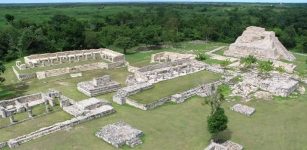 Mayapan: How The Last Big Mayan City Met Its End
Featured Stories | Jul 26, 2017
Mayapan: How The Last Big Mayan City Met Its End
Featured Stories | Jul 26, 2017 -
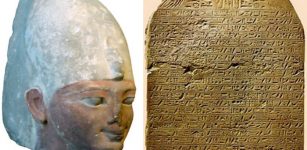 How The Hyksos Invasion Of Ancient Egypt Changed History
Civilizations | Oct 26, 2016
How The Hyksos Invasion Of Ancient Egypt Changed History
Civilizations | Oct 26, 2016 -
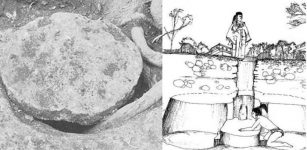 Mysterious Chultuns – Ancient Underground Chambers Built By The Maya – But For What Purpose?
Featured Stories | Jun 24, 2017
Mysterious Chultuns – Ancient Underground Chambers Built By The Maya – But For What Purpose?
Featured Stories | Jun 24, 2017 -
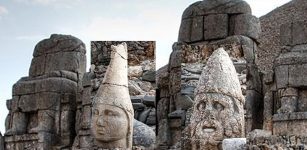 Mount Nemrut: ‘Throne Of The Gods’ – Mysterious Royal Tomb Surrounded By Gigantic Sculptures
Civilizations | Nov 16, 2018
Mount Nemrut: ‘Throne Of The Gods’ – Mysterious Royal Tomb Surrounded By Gigantic Sculptures
Civilizations | Nov 16, 2018 -
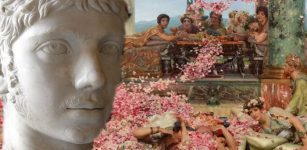 Museum Classifies Roman Emperor Elagabalus As Trans – But Modern Labels Oversimplify Ancient Gender Identities
Featured Stories | Nov 28, 2023
Museum Classifies Roman Emperor Elagabalus As Trans – But Modern Labels Oversimplify Ancient Gender Identities
Featured Stories | Nov 28, 2023 -
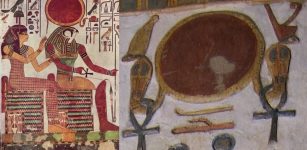 Eye Of Ra – Powerful Ancient Egyptian Symbol With Deep Meaning
Ancient Symbols | Jan 23, 2019
Eye Of Ra – Powerful Ancient Egyptian Symbol With Deep Meaning
Ancient Symbols | Jan 23, 2019 -
 Advent: Facts And History About The Christian Season Celebration
Christmas Traditions | Dec 1, 2024
Advent: Facts And History About The Christian Season Celebration
Christmas Traditions | Dec 1, 2024 -
 Herne The Hunter – The Horned God And Lord Of The Forest In British Mythology
Featured Stories | Jan 12, 2016
Herne The Hunter – The Horned God And Lord Of The Forest In British Mythology
Featured Stories | Jan 12, 2016 -
 Scientists Found Mysterious Prophecies In Ancient Egyptian Pyramid – Are They Linked To The Strange Visions Some Experience Inside?
Featured Stories | Dec 17, 2024
Scientists Found Mysterious Prophecies In Ancient Egyptian Pyramid – Are They Linked To The Strange Visions Some Experience Inside?
Featured Stories | Dec 17, 2024 -
 Ancient Mystery Of Italy’s Long-Lost Civilization That Pre-Dates The Ancient Roman Empire And Other Great Old Cultures
Civilizations | Mar 29, 2019
Ancient Mystery Of Italy’s Long-Lost Civilization That Pre-Dates The Ancient Roman Empire And Other Great Old Cultures
Civilizations | Mar 29, 2019 -
 Mystery Of The Lost Underground City Of The Grand Canyon
Featured Stories | Nov 19, 2014
Mystery Of The Lost Underground City Of The Grand Canyon
Featured Stories | Nov 19, 2014 -
 Is Mysterious And Powerful Vajra One Of The Most Dangerous Weapons Of The Gods?
Featured Stories | Nov 17, 2014
Is Mysterious And Powerful Vajra One Of The Most Dangerous Weapons Of The Gods?
Featured Stories | Nov 17, 2014 -
 How Many Ice Ages Has The Earth Had, And Could Humans Live Through One?
Featured Stories | Sep 26, 2022
How Many Ice Ages Has The Earth Had, And Could Humans Live Through One?
Featured Stories | Sep 26, 2022 -
 Why Did King Solomon Hide Advanced Technology In A Secret Place? – The Great Deception – Part 2
Featured Stories | Apr 3, 2021
Why Did King Solomon Hide Advanced Technology In A Secret Place? – The Great Deception – Part 2
Featured Stories | Apr 3, 2021 -
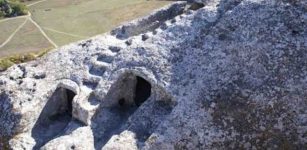 Mangup-Kale: Spectacular Ancient Cave City Hidden In The Crimean Mountains And Home To The Mysterious Kingdom Of Feodoro
Civilizations | Aug 4, 2015
Mangup-Kale: Spectacular Ancient Cave City Hidden In The Crimean Mountains And Home To The Mysterious Kingdom Of Feodoro
Civilizations | Aug 4, 2015 -
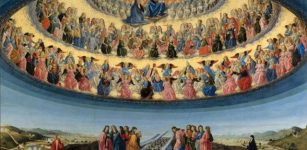 Ancient Secrets Of John Dee And The Enochian Apocalypse Examined
Featured Stories | Jul 8, 2015
Ancient Secrets Of John Dee And The Enochian Apocalypse Examined
Featured Stories | Jul 8, 2015 -
 The ‘Four Sons Of Horus’ And Their Connection To Stars In The Ursa Major Constellation
Egyptian Mythology | Aug 22, 2017
The ‘Four Sons Of Horus’ And Their Connection To Stars In The Ursa Major Constellation
Egyptian Mythology | Aug 22, 2017 -
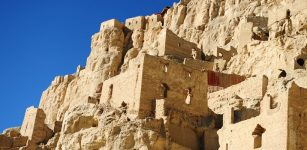 Ruins Of The Mysterious Kingdom Of Guge That Suddenly Vanished Overnight
Civilizations | Apr 10, 2021
Ruins Of The Mysterious Kingdom Of Guge That Suddenly Vanished Overnight
Civilizations | Apr 10, 2021 -
 Unusual Underwater Archaeological Discovery In California May Confirm Thousand-Year-Old Legend And Re-Write Ancient History
Featured Stories | Aug 15, 2024
Unusual Underwater Archaeological Discovery In California May Confirm Thousand-Year-Old Legend And Re-Write Ancient History
Featured Stories | Aug 15, 2024 -
 What Was Legio Martia And Why Were The Roman Soldiers Called The Martians?
Ancient History Facts | Jan 5, 2018
What Was Legio Martia And Why Were The Roman Soldiers Called The Martians?
Ancient History Facts | Jan 5, 2018



